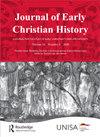Function and Aesthetics of Talmudic Medical Recipes
IF 0.1
0 RELIGION
引用次数: 1
Abstract
Abstract The present article investigates possible practical and intellectual contexts of talmudic medical recipes, and especially the ones that introduce therapies with a verb, such as “bring XY.” According to my count, there are 47 such recipes disseminated over the Talmud, and most of them likely stem from the same source, a treatise of simple remedies. These recipes often provide multiple therapies, a feature that has caused scholars to doubt their effectiveness. This ineffectiveness would, according to these scholars, already have been realised in late antiquity and therefore caused users to add another try. Contrary to these assumptions, I argue that alternative therapies fulfil a wide range of tasks, from offering therapies more suitable to the season or the patient, to accounting for an aesthetics of variegation.塔木德医学配方的功能与美学
摘要:本文调查了塔木德医学配方可能的实践和知识背景,特别是那些引入带有动词的疗法,如“带来XY”。根据我的统计,在《塔木德》中流传着47种这样的食谱,其中大多数可能来自同一来源,一篇关于简单疗法的论文。这些食谱通常提供多种治疗方法,这一特点使学者们怀疑它们的有效性。根据这些学者的说法,这种无效在古代晚期就已经意识到了,因此导致用户再试一次。与这些假设相反,我认为替代疗法完成了广泛的任务,从提供更适合季节或患者的疗法,到考虑到多样化的美学。
本文章由计算机程序翻译,如有差异,请以英文原文为准。
求助全文
约1分钟内获得全文
求助全文

 求助内容:
求助内容: 应助结果提醒方式:
应助结果提醒方式:


